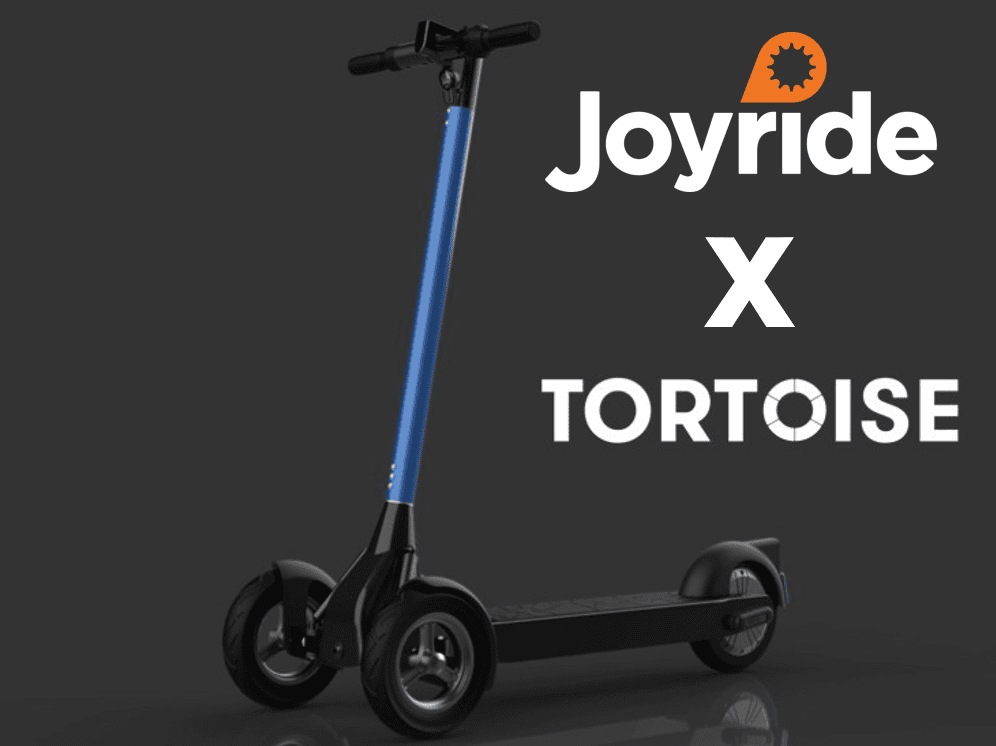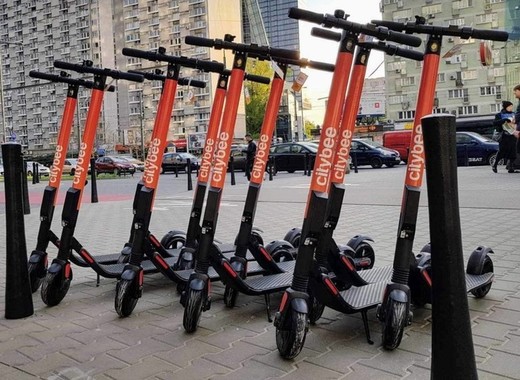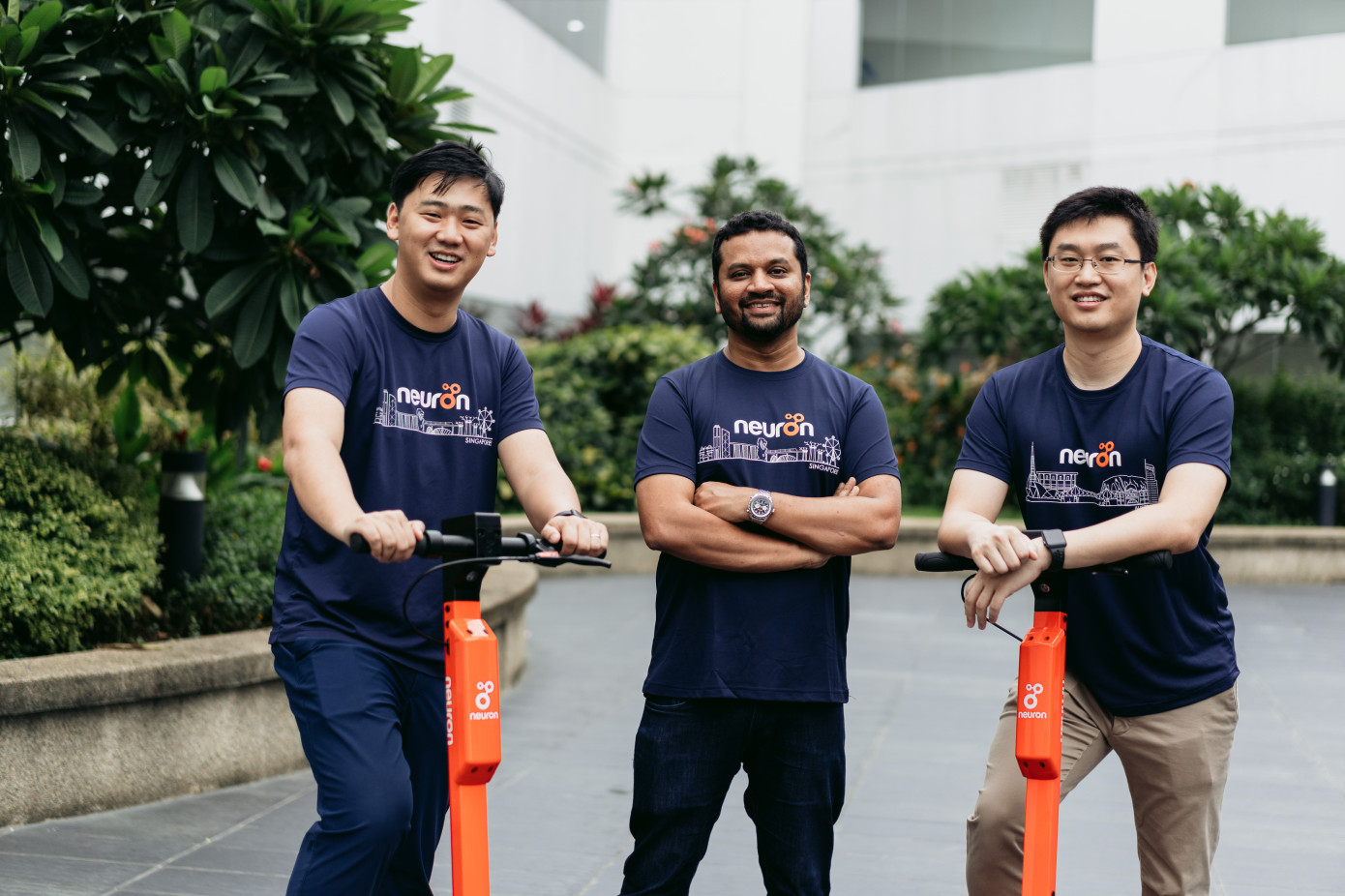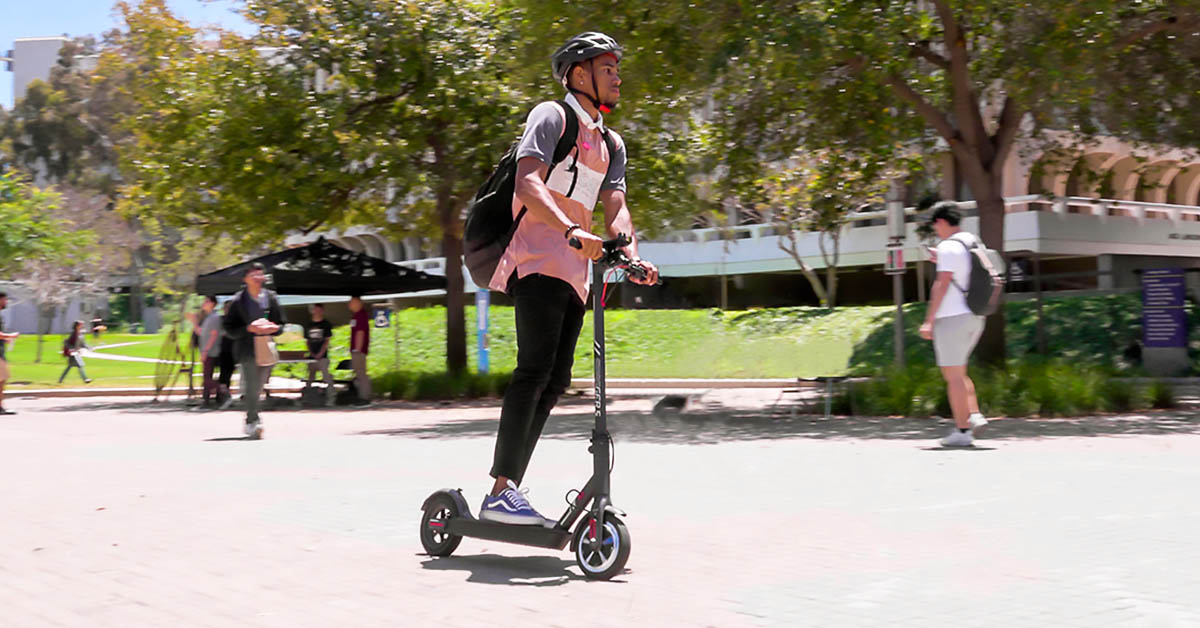At Joyride, we’re constantly looking for ways to improve fleet-management offerings for micromobility operators. So when former Uber exec Dmitry Shevelenko unveiled Tortoise at last month’s Micromobility Europe, our move into self-driving scooters became even more self-evident.
Tortoise combines autonomous technology with human intervention to reposition scooters and e-bikes anywhere in the world, at any given time. The company has been working with hardware manufacturers like Acton and Yimi to retrofit their scooters with additional $100 worth of equipment (two phone cameras, a radar, processor and motor) to make them compatible with Tortoise technology. And now, by integrating with Joyride’s fleet-management software, we’ve launched one interface that lets any Joyride-powered operator access Tortoise’s repositioning services through our backend system. This collaboration is a game-changer for any business owner looking to move their scooters with no field labor in the loop.
We sat down with Dmitry ahead of this week’s CoMotion LA to hear about his vision for Tortoise and the future of mobility – and how Joyride is now part of that equation.
Joyride: What is Tortoise and how are you aiming to change the micromobility space?
Dmitry: Tortoise’s autonomous vehicle repositioning software replaces the need for employees or juicers. We use a 24/7 teleoperations center in Mexico City combined with autonomous technology (for example, vehicles won’t be autonomous when crossing an intersection). We’re all about sustainability from both a unit operations and environmental standpoint, because using vans to move electric scooters is just not ideal nor is it environmentally friendly. According to a recent MIT study, operators can double electric scooter rentals per day if the vehicles are actually moved around after they are used. Just imagine if a taxi is forced to wait in the same spot after a pickup, and now picture how many more rides it will get if you actually let it go places.
Why is collaborating with Joyride a good fit for Tortoise?
The strongest overlap between Joyride and Tortoise is that we both want to make shared micromobility as easy as possible for operators and provide them with the most sophisticated software they need in order to do what they do best: build relationships with cities, keep vehicles in tip-top shape and provide an optimal rider experience. Joyride is a tool used to manage fleets, and operators use our technology to find fleets. So it’s a natural fit for us to integrate. Joyride software identifies vehicles and lets us know exactly where they are, and then we can move them from there. Assuming an operator is using a vehicle that’s already compatible with Tortoise software (and we’re busy working on that), they can enter GPS coordinates and press a “Move It” button and then we will provide an ETA for how long it will take. There’s no limit to how many vehicles can be moved at a time.
How will operators be charged to use your service within Joyride?
We charge the operator a monthly subscription fee that’s a lot cheaper than using field labour. Depending on the market, the price usually hovers at around $50/month per vehicle for unlimited repositioning. We will eventually move into a per-mile repositioning fee that’s based on utilization. In many markets, operators are currently charged $10/day per vehicle to have a juicer get a scooter back up on the street, so Tortoise pays for itself in five days. There’s no extra charge to use Tortoise software within Joyride’s interface.
What are your launch plans?
We are launching next month in suburban Atlanta with electric scooter sharing company Go X. We just incorporated this year and are coming out of stealth mode. Joyride marks our first integration with a fleet-management software platform.
What’s the meaning behind your company’s name? Slow and steady wins the race, right?
Yes, about the Tortoise name. The max speed of our repositioning is five miles per hour, which makes our tech safe and accessible. Secondly, Tortoises live a long time, and we want to be a 100-year company. We are starting out by moving scooters and e-bikes across the city with no field labour involved, but our model can extend to cleaning, construction, delivery and more. There’s a lot that needs to be moved, and automated repositioning is the least carbon-intensive way to do it.
What’s the bigger picture for Tortoise?
As the former director of business development at Uber, I helped push the company into the micromobility space with their Jump acquisition. I’ve seen the industry from all perspectives. We need to solve the impractical juicer economy issue and I believe autonomous repositioning will help micromobility realize its full potential. More than 60% of car trips in the US are less than two miles, so why aren’t we utilizing micromoblity even more? There’s a real urgency to make this all work and Tortoise is an ingredient to that. We’re thinking global, just like Joyride.
Learn more about our other recently announced integrations and all-new pricing plans for fleet sizes ranging from five to 500,000-plus vehicles.



